My first meditation following the teachings of Heartfulness, a spiritual practice centered on leading with the heart, was not what I expected. I’d flown 20-plus hours to get from my home in Denver to the Kanha Shanti Vanam village just outside of Hyderabad, India. My introduction to Heartfulness meditation took place in an empty conference room at The Pearl hotel above a restaurant. I sat in an office chair with my shoes off, the sound of the air conditioner behind me. Outside, a massive meditation hall and a bounty of trees and natural life.
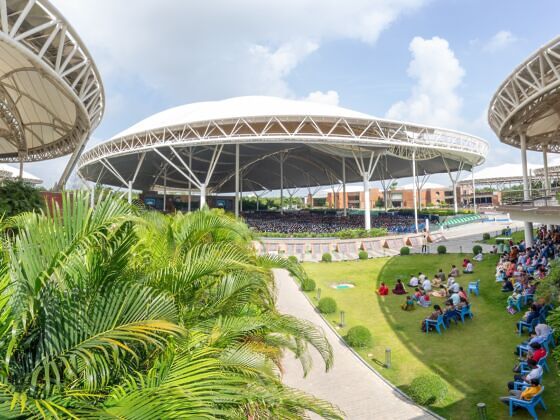

In India, a Heartfulness Meditation Retreat Aims to Improve Your Mental Health — and the Planet
As I’d quickly learn, exact location isn’t the point of the Heartfulness way. Quite the opposite, in fact. The meditation method is about accessibility, formatted in a way to be done by just about anyone, just about anywhere, at just about any time. A trip to Kanha, however, opens up so many more doors than just the promise of mental wellbeing.
Kanha’s origin and evolution
Wellness travel has spiked over the past couple of years, and it shows no signs of slowing down. According to the Global Wellness Institute, people are expected to spend $8.5 trillion on trips centered around improving one’s general wellbeing by 2027. There are a variety of subcategories of “wellness” travel, from physical to dietary, yet mental wellness is one of the fastest growing subsectors.
My own travel tendencies don’t typically align with these statistics. For most of my professional career, I’ve traveled to explore and write about the food, the alcohol, and the cannabis wherever I go. Kanha is a full village purpose-built to help people live the Heartfulness way and serve as a proof of concept for environmental restoration projects and societal teachings. There’s no alcohol, cannabis, or meat to be found (although Heartfulness itself doesn’t explicitly ban substances or demand a vegetarian diet).
Kanha Shanti Vanam is the headquarters of Shri Ram Chandra Mission, which started in 1945. At its core, it provides spiritual training through Heartfulness meditation, which is based around the Sahaj Marg system of meditating on the heart and living a balanced life rather than focusing on specific breathwork techniques or mantras. It’s designed for people to attain the benefits of meditation through a trainer in three short sessions, with studies showing near-instant improvements in areas like heart rate and stress. It’s also, like many things at Kanha, given for free and run largely by volunteers.
Millions of people across more than 130 countries practice Heartfulness. Thousands of trainers led by Shri Kamlesh D. Patel, known as Daaji, help guide practitioners at more than 5,000 meditation centers around the world. Though it can be practiced anywhere, there’s a good reason why travelers flock to Kanha — followers and non-followers alike.
The land that the village now stands on was barren a decade ago. Located near the center of India, Kanha has a semi-arid climate, and only the hardiest trees dot the landscape. One of my hosts, Karunakar, told me sufficient water was an issue to the point that there was a common piece of advice for people who were visiting to help in the early days of construction in 2017: Bring one bottle of water for yourself and one for a plant. There wasn’t enough water to wash clothes, so volunteers were advised to bring enough clothes for their entire stay.
Today, ponds and lakes dot the landscape year-round, fed by roofs and water systems designed to not let the rainy season’s bounty go to waste. Of the approximately 1,400 acres that make up Kanha, 400 have been developed into apartments, houses, research buildings, offices, the world’s largest meditation hall, a hotel, K-12 schools, an ayurvedic wellness center, a hospital, gardens (for food, beauty, and research), and more. Some 1,500 families live in Kanha, and gatherings of tens of thousands of people aren’t uncommon — the week after my visit in September, 30,000 people gathered from around the world, with another 30,000 to 40,000 the following week.
Building a modern town with all of the necessary infrastructure in such a short time is no small feat. Equally impressive is the sustainable mindset to bring fertility back to the land. This rapid transformation, I’m told, is only possible with a mind opened through meditation.
“Meditation works like a vaccination,” Daaji told me over the course of an hour-long interview. “It prevents you from wrong thinking. Wrong thinking leads to wrong results, and wrong results make you depressed.” When you view life from the perspective of a meditated mind through experiential learning, he adds, you’re able “to always see things from the highest and serve from the highest.”
Over the course of five days, my guides Hari and Darshvinder gave me the grand tour in between discussions about life, spirituality, and humanity.
Finding mental wellness in a setting designed for enlightenment
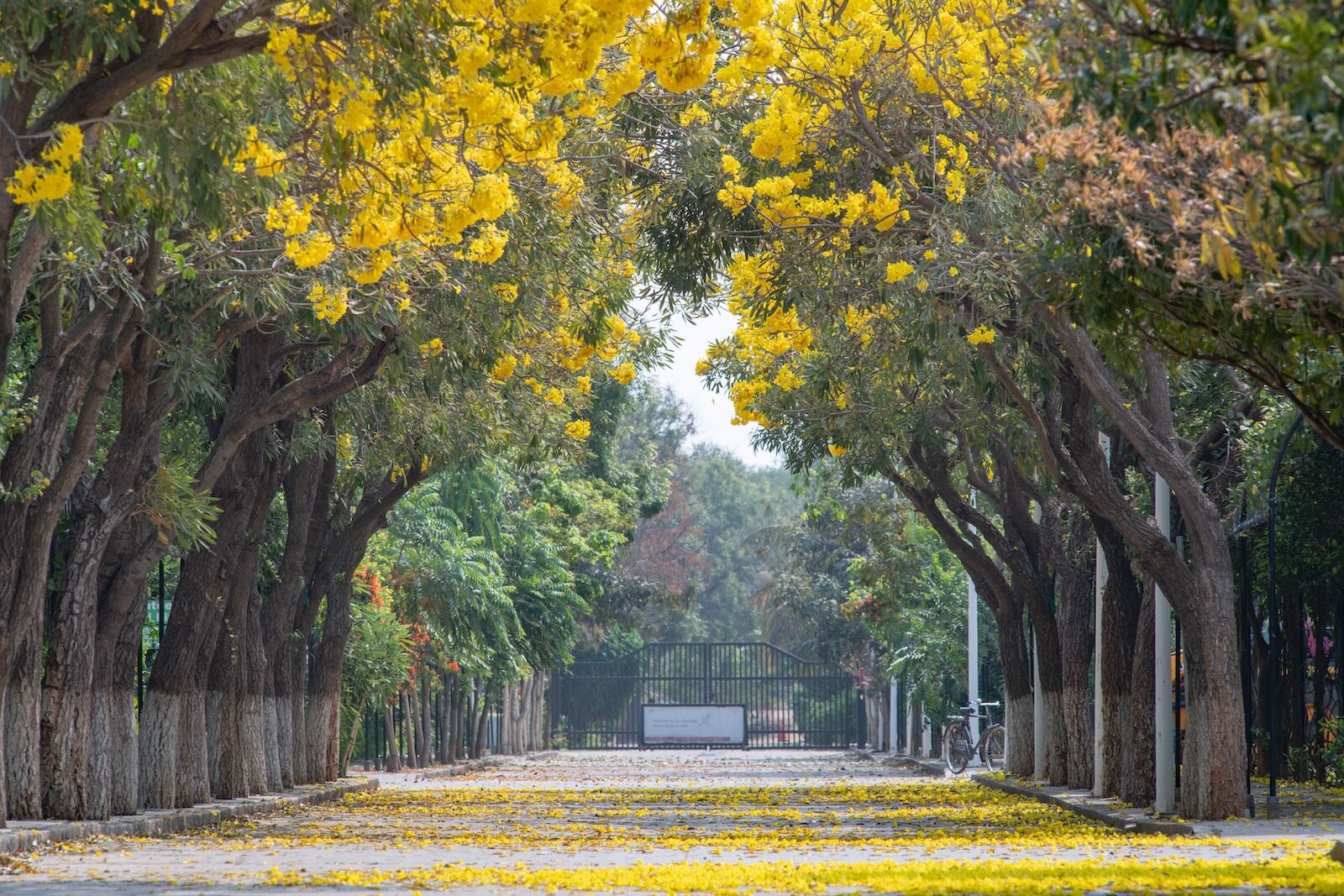
Photo: Heartfulness Media Team
Darshvinder started my meditation with relaxation from the toes up. I’m not sure if it was the sleep deprivation, but by the time she’d talked through intentionally relaxing up to the knees with our eyes closed, my feet, toes, and calves felt like they were part of me without feeling every part of them. That followed up to my waist, chest, palms, jaw, and top of the head. As my heart rate slowed, the only comparison I could think of was the feeling just before a cannabis edible fully kicks in. And then the meditation session truly began.
Unlike other popular meditation practices, Heartfulness doesn’t rely on music or incense, timers or movements, or a set or guided way to breathe. Breathing becomes rhythmic when one starts to meditate, Hari explained, and the technique naturally follows the meditation when it’s guided by a trainer who acts like a conduit. The goal of Heartfulness is to just be. Ahead of the relaxation, Hari instructed me to let thoughts come as there’s no use in trying to fight them. Acknowledge those thoughts, then let them pass. And the onslaught indeed came fast. It felt like every three seconds some new thought pushed itself to the forefront.
Over time (even in the moment it was hard for me to gauge how long we sat without speaking), I began to feel a noted stillness within myself and around me. The thoughts kept coming, but it became easier to let them pass through. Somehow I didn’t feel any inclination to doze off despite being in the opposite time zone after nearly a full day of travel.
Just when my thoughts were starting to turn to the fact that this might be the longest I’ve ever sat still with my own thoughts, Hari made a small noise to indicate that it was time to let my body make its first movements since relaxing. We talked about how I felt before, during, and after. With no idea how to describe it, I sheepishly said some words about feeling calm yet energized.
We walked out of the conference room for dinner, and Hari explained that his role as a trainer was to give me energy throughout the meditation while sitting across from me. Half of me was all-in on the stillness of the first meditation while the other half wondered if this might be a long week. Hari assured me that, in a way, it’s better to go in with no prior knowledge of Heartfulness or meditation practices. That way it’s all about experiencing everything yourself firsthand rather than through the filter of books, blogs, and discussions. More positive effects, he noted, would continue to come as I progressed through the rest of the first three meditation sessions and learned about the cleansing of emotional baggage and the prayer sides of the practice.
One of the key tenets of Heartfulness meditation is that it’s about finding peace and stillness wherever you are, regardless of your setting. That said, it’s hard to imagine a better place to do so than walking the path that goes through the Yatra Garden.
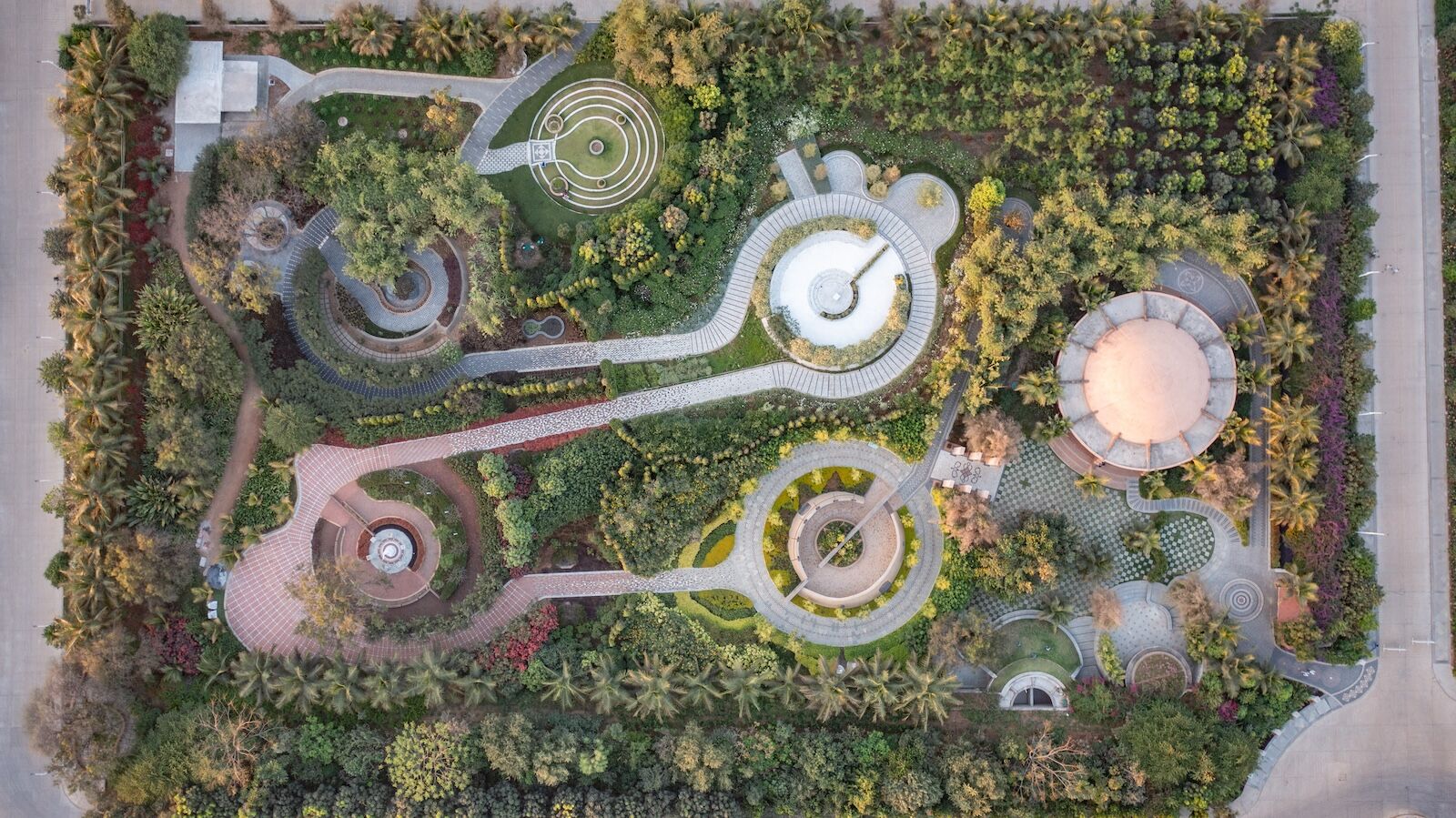
Photo: Heartfulness Media Team
It all starts at a domed building. The ground underneath is covered in tile with 23 rings representing the stages toward enlightenment — the last of which only a few have attained. The acoustics are designed just right to allow an incredible echo only when standing directly in the center. The subsequent sections of the garden are related to chakras.
Each chakra’s energy vibration is associated with a different color. At the start of the path, for example, is the chakra for the center of the body, represented by yellow. Each plant in the sections adhere to the color of the chakra, with yellow hibiscus and plants with yellow leaves and small yellow flowers. This leads into red, then white, which is associated with fire and is the point of love and anger. The flowers and leaves of the plants here are all white, which is in stark contrast to the following black, the water chakra, represented here with a black neem tree and black bamboo.
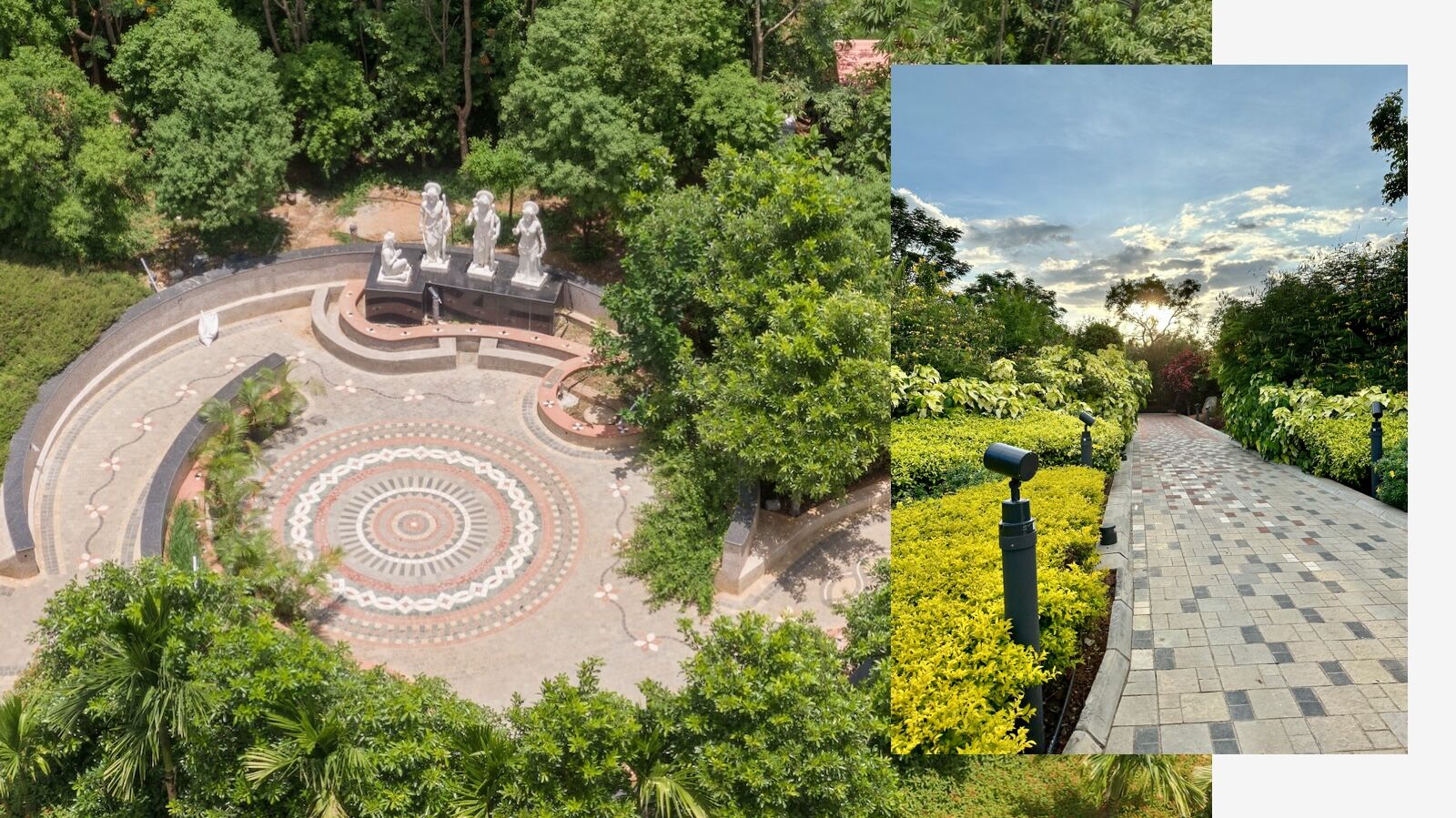
Photo: Heartfulness Media Team, left; Nickolaus Hines, right
Following the path past the heart region and into the mind region leads to higher representations of mindfulness that can be reached. Statues of figures from various religious backgrounds can be seen throughout. An inlaid DNA design in the stone path leads through the mind region. At the end, there’s a 30-foot statue of Lalaji, the first guru, sunken into the ground, making it a gathering point that’s somewhat hidden other than for people who walked the path.
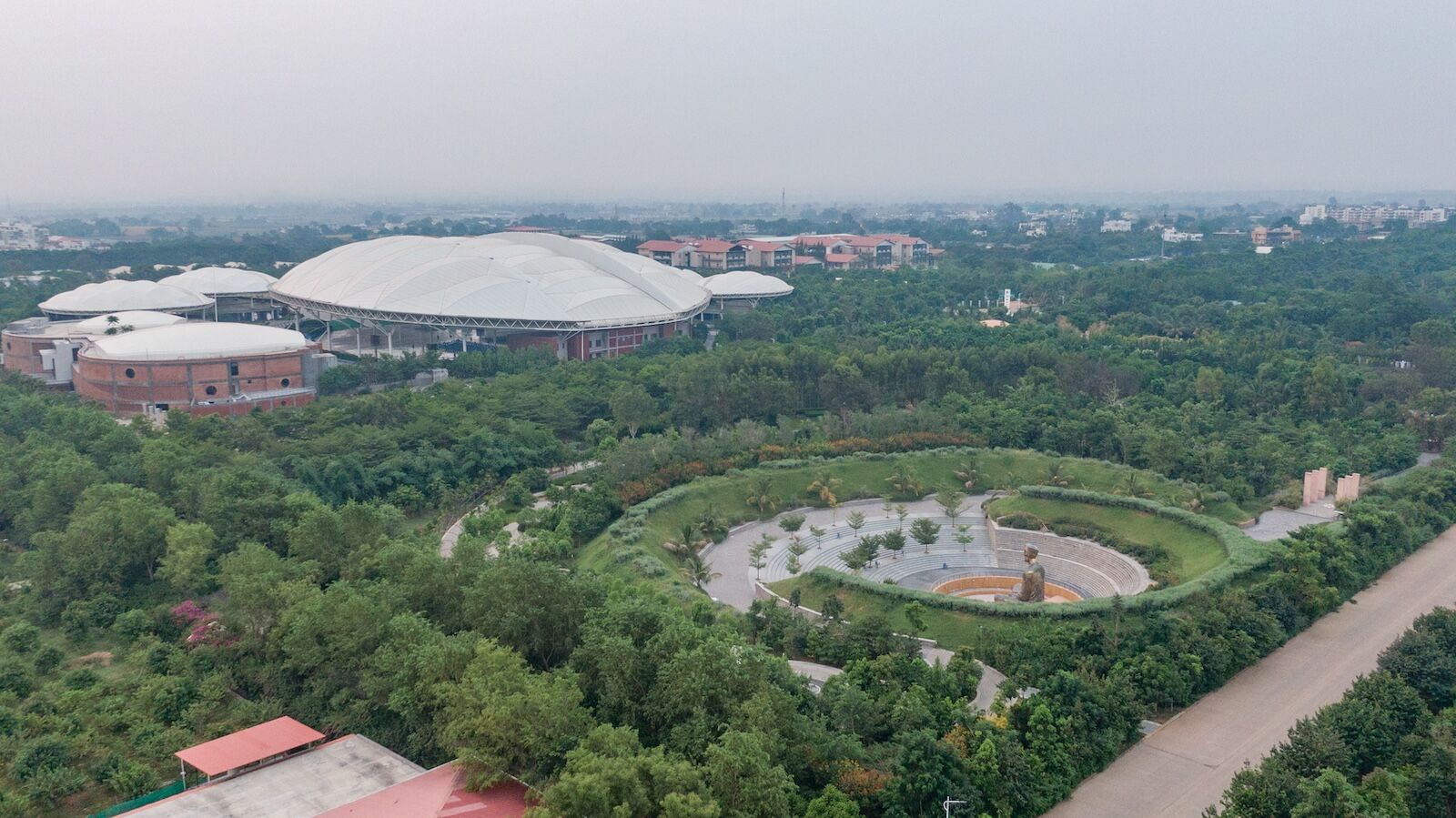
Photo: Heartfulness Media Team
I walked the full path twice during my stay. As a plant lover and home gardener, I always feel my best surrounded by plants, but it was something different in the Yatra Garden. Both times I reached the end, my mind was pleasantly buzzing, whether from the enticing aromas coming off the trees or, as Darshvinder explained, the energy vibrations of the garden itself.
A complete village
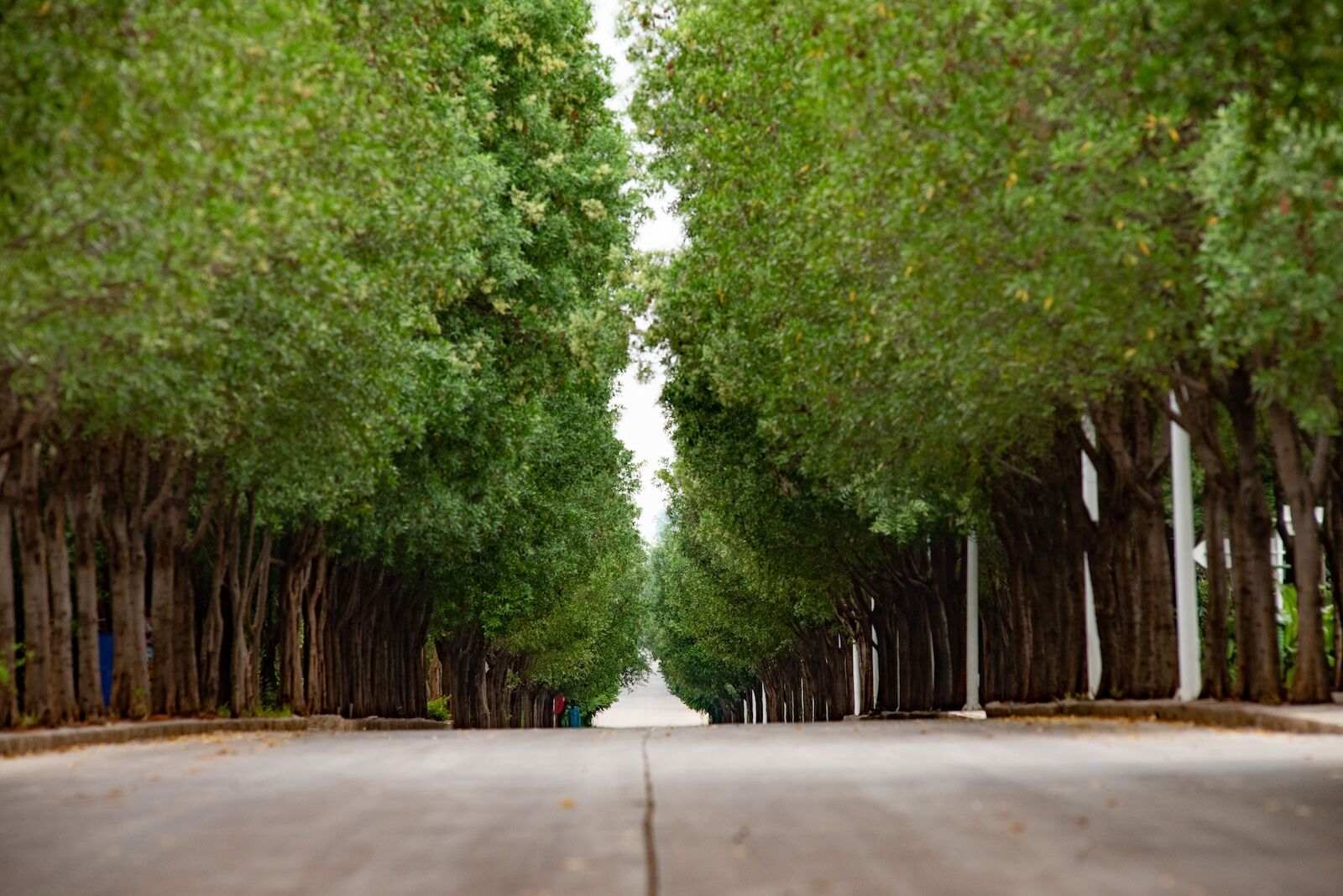

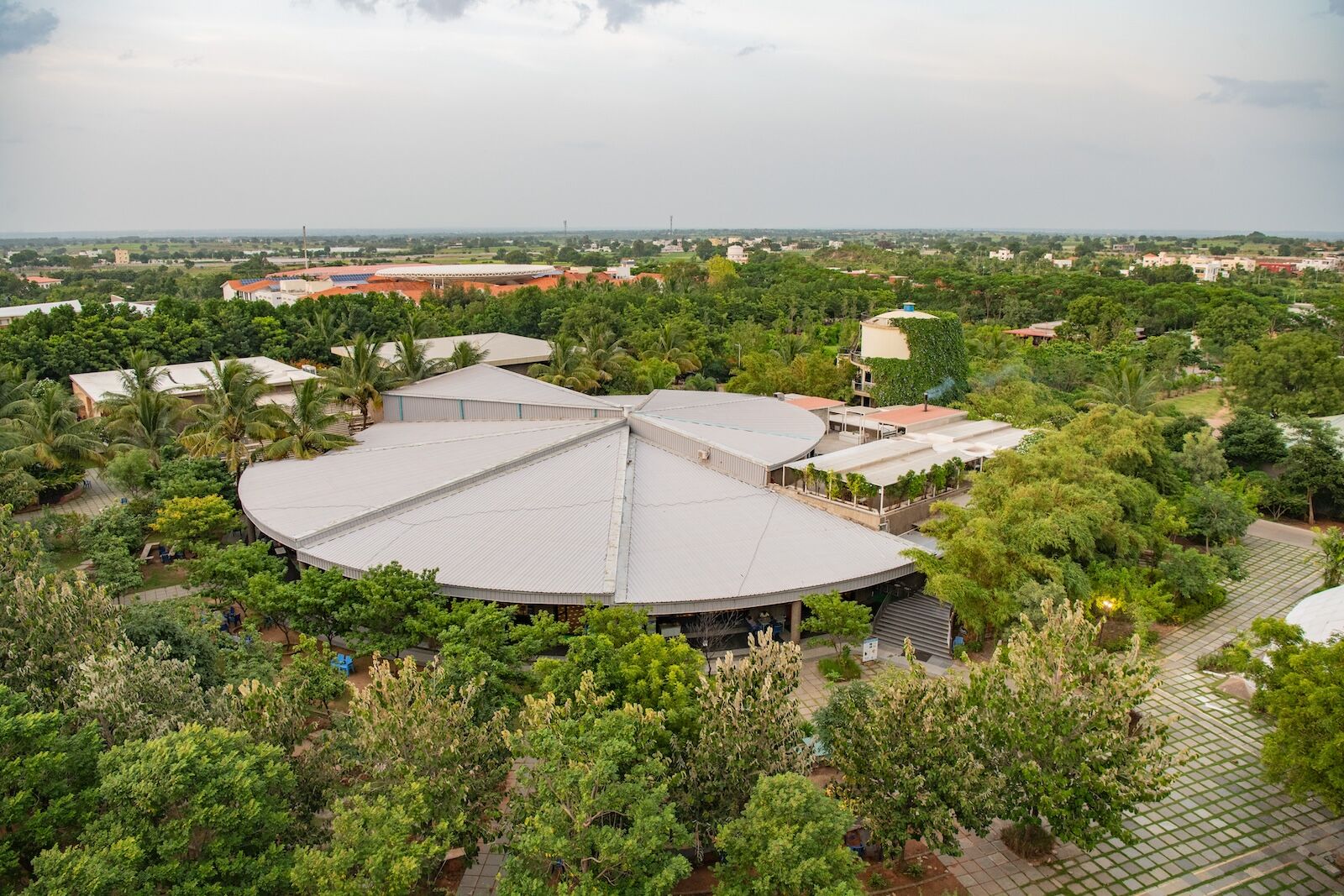
As much as Kanha is the home of Heartfulness and a place for followers to gather, it’s also a home in the more traditional sense. Daaji has a custom-built house on the land, and Hari’s home is currently under construction nearby. Other plots have development plans on the way while people stay in the apartments or off of the property. A series of newly paved, tree-lined roads make it easy to get from home to bookstore to classrooms to meditation hall.
Water treatment plants handle the region’s most precious resource, and a cricket field complements a state-of-the-art gym with a pool, weights room, courts, and badminton training facility led by nationally ranked players. Meditation leads to efficiency in all areas of life, including sports, and the facility is working to train young girls to empower them through athletics and scholarship. A central building has room for business operations, as well as a full media department and architect offices.
A hospital provides care while a wellness center has rooms for physical therapy and a wide range of ayurvedic treatments, spanning from the widely practiced to and the more unique. Here, after a four-hands massage and shirodhara treatment (oil rhythmically dripped on the forehead to bring one to a trance-like state), I joined in a polarity session, which is done to cleanse and resett energies through a series of movements done by a trained practitioner.
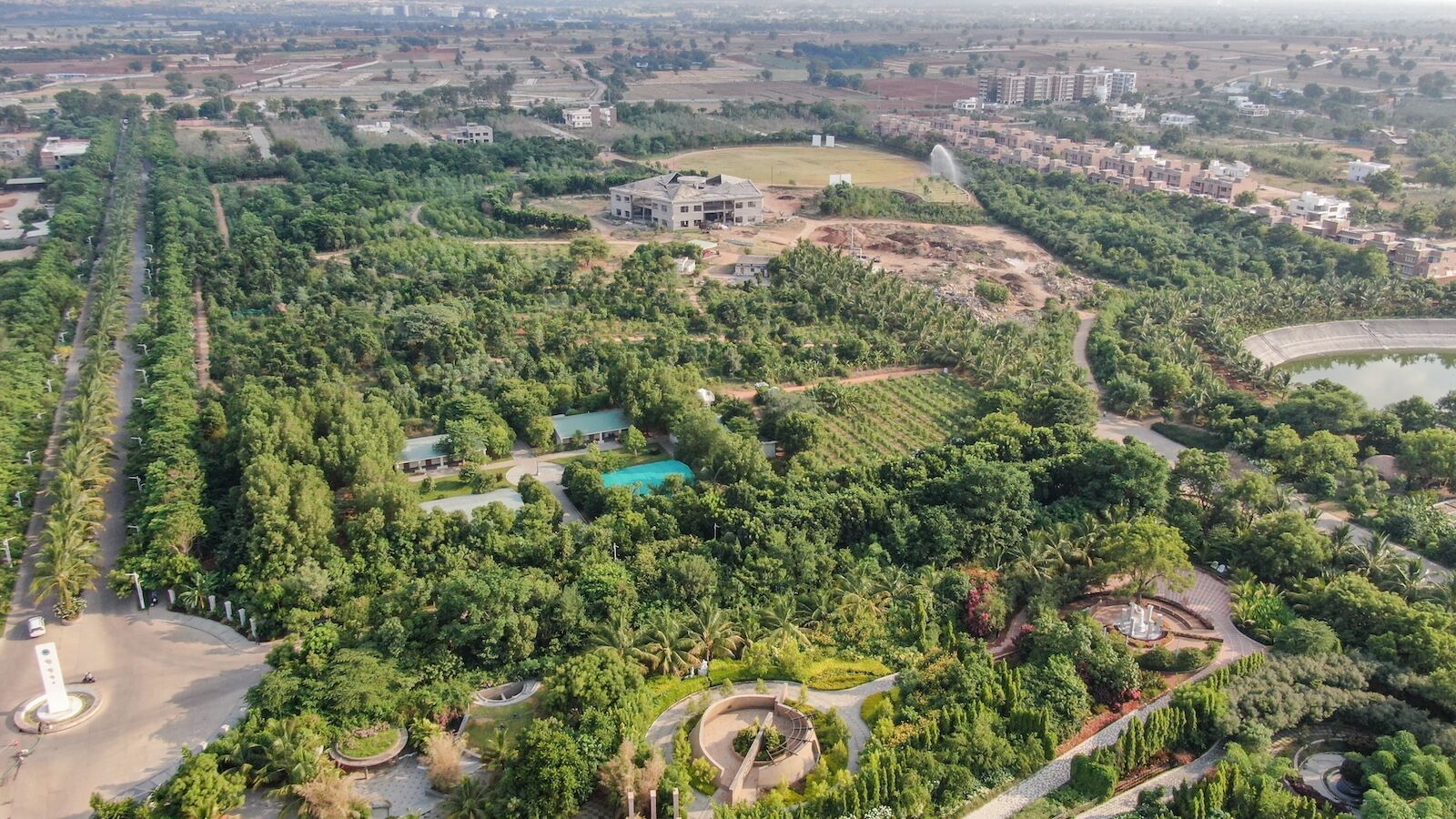
Photo: Heartfulness Media Team
Many of the plants found around Kanha — and there are countless, from native species to global ones — come from the Heartyculture nursery that’s led by a man who goes by GR (like Dr. but for plants because “everything he touches turns green,” Hari explained).
Food-processing facilities take the many fruits, herbs, legumes, and vegetables grown on site both outdoors and in hydroponic greenhouses and turn them into oils and products that are sold at the department store and served in the communal kitchen.

Photo: Nickolaus Hines
Various breeds of cows from the dairy on the outskirts of the village provide the milk for ghee and the various types of cheeses maturing in the aging chamber. I walked through the main kitchen that can serve 50,000 people, where all of the chopping, cooking, and sanitation is done by volunteers speaking a number of different languages. During the height of the pandemic, 30,000 meals were packaged and sent to help people in neighboring areas.
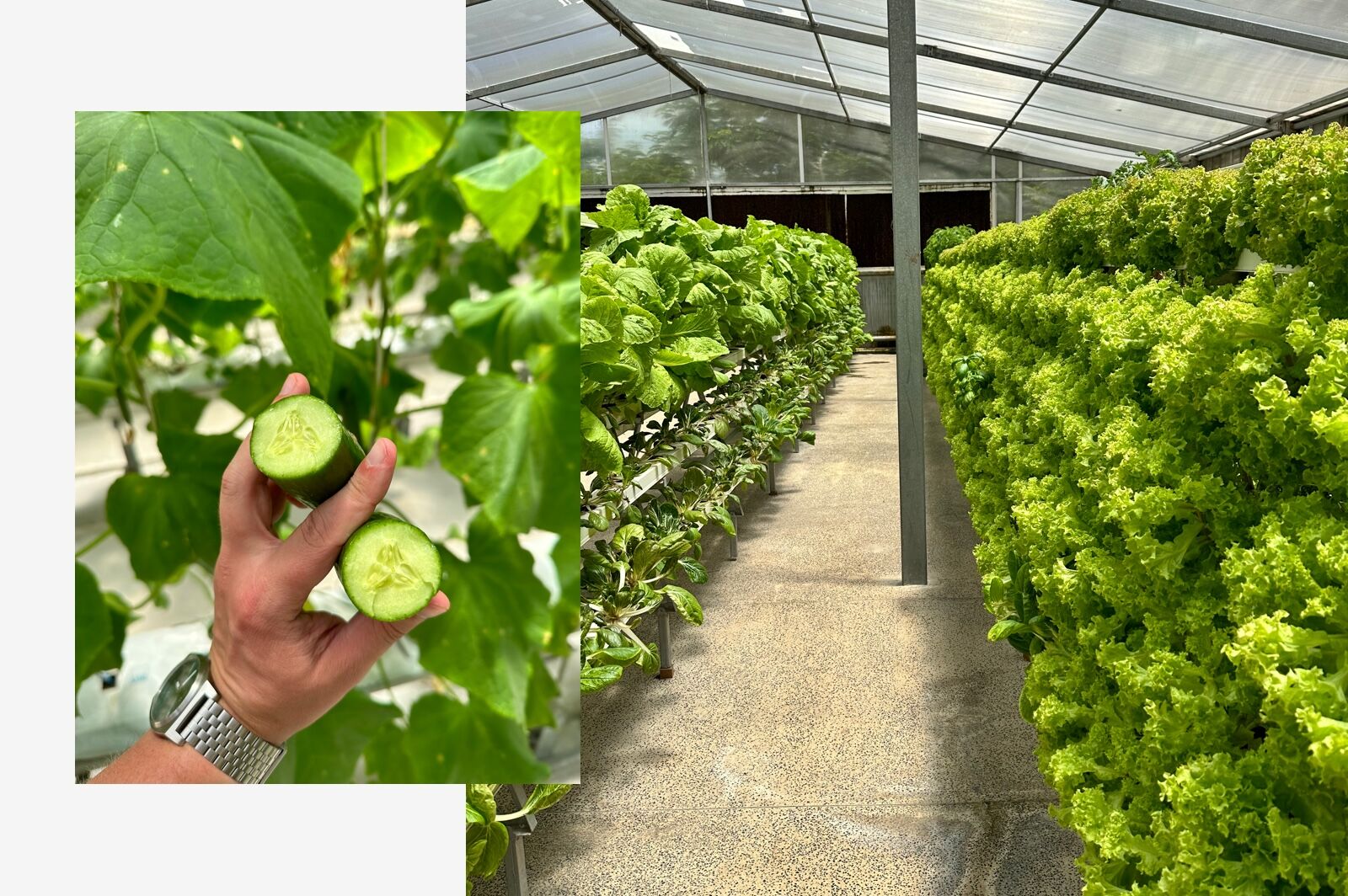
Photos: Nickolaus Hines
The design comes from Daaji’s vision. His background isn’t in city planning or design — he was a pharmacist on Staten Island for decades before leading Heartfulness — and followers aren’t expected to give up a material life. In a statement I came to expect in some form or another to my questions of how something like this is possible, I’m told that meditation helps people have the focus that it takes to succeed in everything from small everyday problems to careers to grand plans.
“Once one is willing to work with an open heart, everything else comes,” Darshvinder explained over tea.
A sustainable proof of concept that shows what’s possible
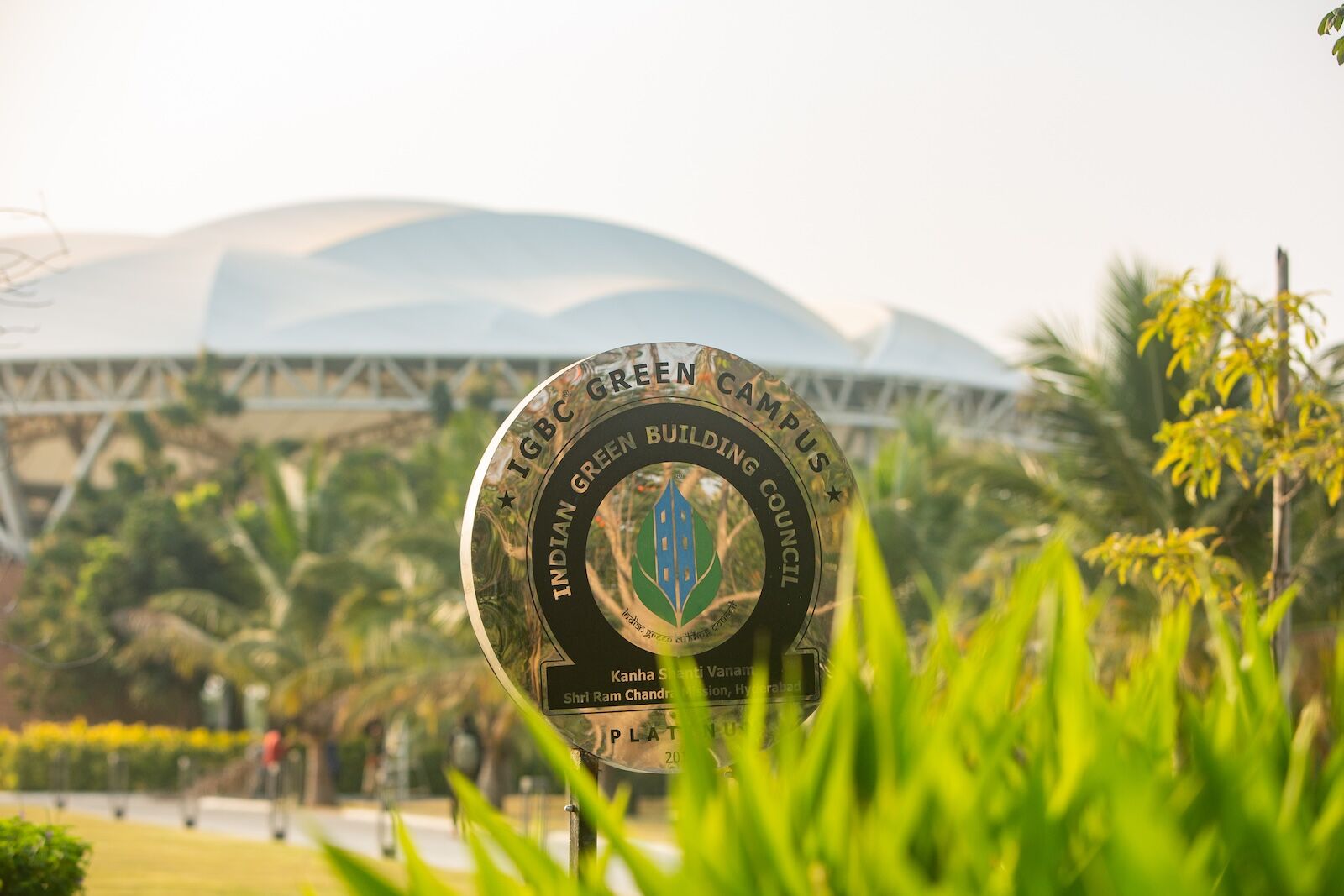
Photo: Heartfulness Media Team
“It’s almost like seeing how creation happened on Earth,” Karunakar said about the rapid transformation of Kanha over breakfast on the day I arrived. “One of the key tenets of Heartfulness is living with nature. Here, we bring a balance of nature back to live in harmony and incorporate nature into a city.”
In 2010, the land lacked any real vegetation. Part of that was due to a low water table. Through water reclamation infrastructure and systems to store and move natural rainfall, it was brought up enough for plants to draw from. Plans were made to grow endangered species native to India. Artificial rain from massive water guns strategically installed around the area give sufficient moisture. First came trees, then undergrowth followed. Aerial photographs of Kanha six years before I got there in 2022 show a landscape dominated by dirt. Today, Kanha is a natural paradise with a human-made tropical rainforest covering about one acre near the center.
While the rainforest is a concept that makes one stop and ponder what’s possible, it’s far from the only restoration. Countless fruit trees, sandalwood, neem, and other varieties — not to mention herbs and annual plants — are found across Kanha.
“Kanha has thousands of species planted or planned, and the goal is to create an ecosystem that’s much longer lasting than us,” Karunakar said. “Inner beauty and harmony are able to manifest outward in the community that way.”
The process of bringing the land back to life happened in a surprisingly short period of time. The first step, Daaji told me in an interview, was to understand the significance of charcoal. Hundreds of pits going down up to eight feet were dug, bags of charcoal put at the bottom, and then they were connected with the new water sources. That helped to clean the water, which was then retained by a layer of black soil, called terra plata, that is common in Amazonian forests and certain parts of India. The top soil was subsequently made more fertile through the addition of nutrients and beneficial microorganisms.
“[Our experiments] gave me a lot of confirmation and courage that yes, we can accelerate the growth of trees,” Daaji said. “It not only speeds up the growth, but I think they remain healthier. And we’re witnessing it here — if you go just outside this campus, you will not find such healthy trees and such a variety.”
Yet the goal of Kanha isn’t just to create a sustainable paradise that refurbishes this small microclimate. Like everything else about Kanha, the concepts tested here are designed to be taken elsewhere — in places that adhere to Heartfulness practices and those that don’t.
At the tissue culture lab, scientists are working with plant cuttings to create disease-resistant crops that can propagate off of a single leaf. The research is being done on endangered and high-value trees for the natural environment that have a low seed-germination rate, as well as to help restore those populations through propagation. Each plant requires a different technique, so the going is slow and painstaking. Kanha’s tissue lab is up to the task, with a new building designed around state-of-the-art plant technology that’s protected with hospital-grade air filtration and biometric security guarding the plants from people accidentally introducing threats to the sterile lab environment. On a tour of the facilities, a worker brought me a neem leaf in culture under lights. On top, dozens of little new clones of the plant were popping off of the cells from the leaf.
“Once people see what is possible, even the doom-sayers will realize it’s not all going to end,” Karunakar explained.
The concepts are already being applied elsewhere. During my visit, delegates from Fiji were also there to speak with Daaji. The island is facing threats from erosion and rising tides, and the delegates arrived to learn from the restoration that’s working in Kanha. Whereas the desert here was turned into a paradise, other places that are already a paradise are turning into a desert due to the impact of climate change.
“The entire planet, if we all work together, we can change it in less than a year,” Daaji said. When I asked if it was possible to have people work together in this way, the response was straightforward, if hopeful.
“That is the only challenge we have,” Daaji said. “If creating a microclimate can make so much of a difference, imagine the entire landscape changed. Earth will be a different, healthier planet.”
World unification to find a solution to something as drastic as climate change has failed time and time again. There are pockets, however, where it’s already happening, and Heartfulness volunteers are helping to lead the way in some of those cases. India’s Prime Minister partnered with Heartfulness to restore 2,000 acres in the central part of India on a stretch of mountainous land from Delhi to Ahmedabad after seeing Kanha’s story. The goal is to halt desertification.
“That mountainside is becoming almost dry, naked mountains,” Daaji said. “On its western side, there is a desert. If these mountains were not there, it would go toward the central part of India and make it entirely a desert. The danger is there.”
Bringing in the next generation
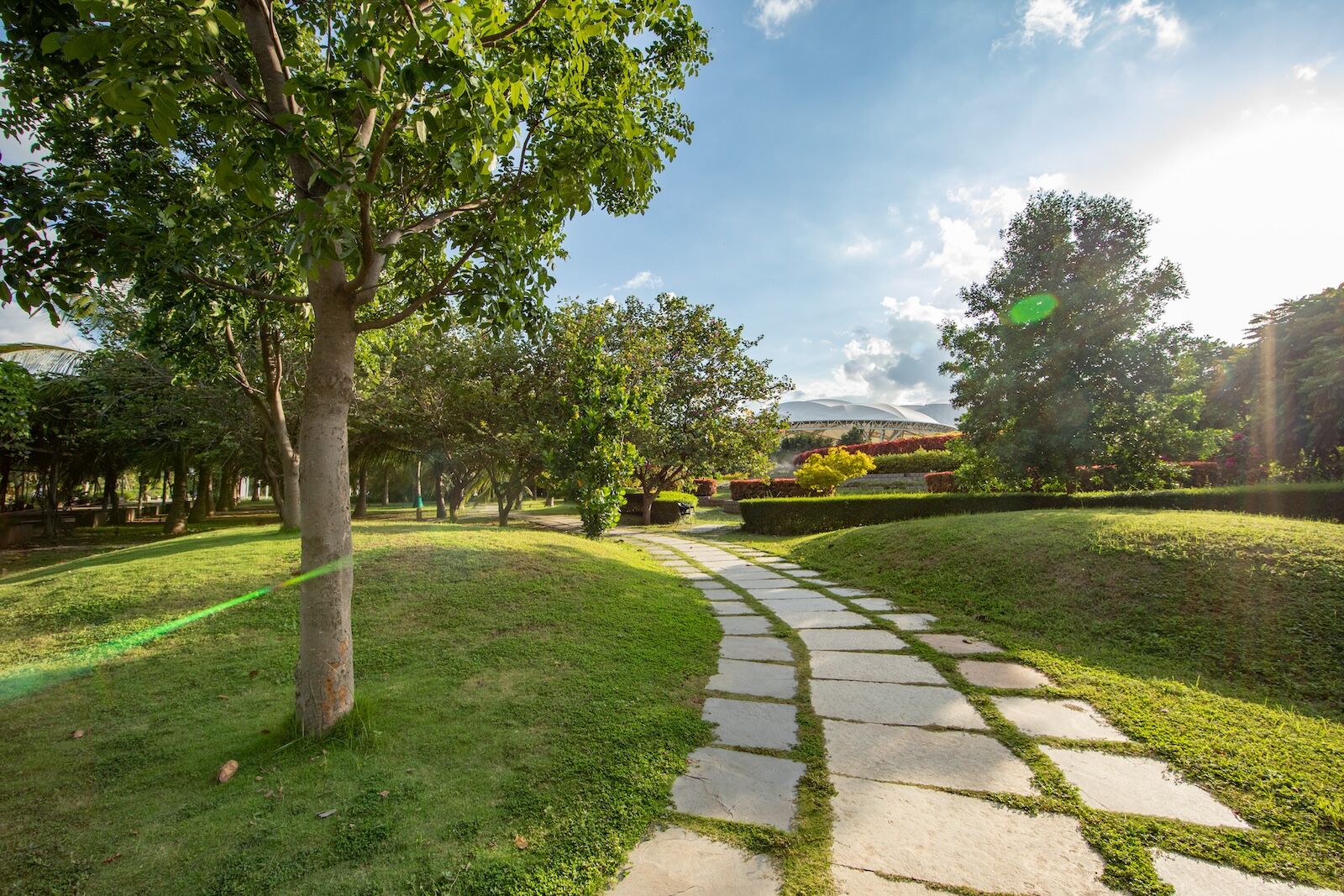
Photo: Heartfulness Media Team
Communities with utopian-esque ideals aren’t new. Centuries of leaders have tried, and largely failed, to create a lasting impact. Places like Merrymount in New England failed because of resistance from the outside world in the 1600s. Henry Ford’s capitalist Fordlandia in the Brazilian forest fell to residents balking at the Puritan restrictions. Others gain immediate traction only to be unable to keep numbers high enough to see long term success.
Daaji avoided calling Kanha a utopia in our talk, while acknowledging organized communities that have failed in the past. The difference, he said, is the meditative mind. There are certain scientific practices that can’t be changed regardless of location, and meditation can help people understand them. It all starts with mediation, and whether people follow the practice or not, the lessons learned and passed on for free are a proof of concept for what can be done elsewhere.
The next generation being raised in Kanha and elsewhere by Heartfulness practitioners will only be more prepared to share. The Heartfulness way can start to be learned once a person turns 15. Before that, certain children in Kanha are learning focus and concentration lessons through a program called Brighter Minds.
Just after sunset, Darshvinder took me and two other visitors to an outdoor class being held in a marble-floor, open-air building near the main meditation hall. Three elementary age students were sitting on the ground with blindfolds on as we walked up. Their teacher drew figures on a piece of paper — a house, a flower — and the blindfolded kids wordlessly drew the same images. Sensing skepticism from myself and the other new arrivals, one of the kids passed me their blindfold. Padding on the top and bottom contributed to a complete blackout. With trained concentration, the teacher said, the children could sense what’s around them without looking.
Each child had a certain area where they excelled. I’d already heard the stories of the early students, including one who could sense how many people were in a separate room through walls and another who could hit a moving bullseye with a bow and arrow while blindfolded.
The teacher asked me if I had a bill in my wallet, and one of the blindfolded students wearing a baby Yoda shirt that read “this is my good side” stood across from me. I pulled out a well-worn $1 bill. He held it and immediately recognized it was an American dollar. That alone could be guessed based on the size, but then, with his face still pointed up toward me and eyes covered, he recited the serial number. Another man pulled out his phone and drew on the notepad app “you are great,” and the kid held the phone and read the message without seeing it.
After, a girl faced away from us holding a set of plastic bowling pins and same-size small bowls. Blindfolded, she tapped them lightly against a chair and correctly guessed each color — the colors let off a different vibration, she explained, though the taps all sounded the same to me.
Brighter Minds works with kids ages five to 15. What they’re able to learn from concentration exercises can’t be achieved by adults who try and jump in later, Darshvinder explained. The lessons in focus and concentration allow the students to augment the senses humans typically rely on so heavily. Those lessons can then be carried on if the children decide to follow Heartfulness meditation. Just like the knowledge and studies from Heartfulness is given for free, Kanha is working on a master training program to guide future Brighter Minds teachers and is passing those lessons on to schools for free.
Coming back to reality
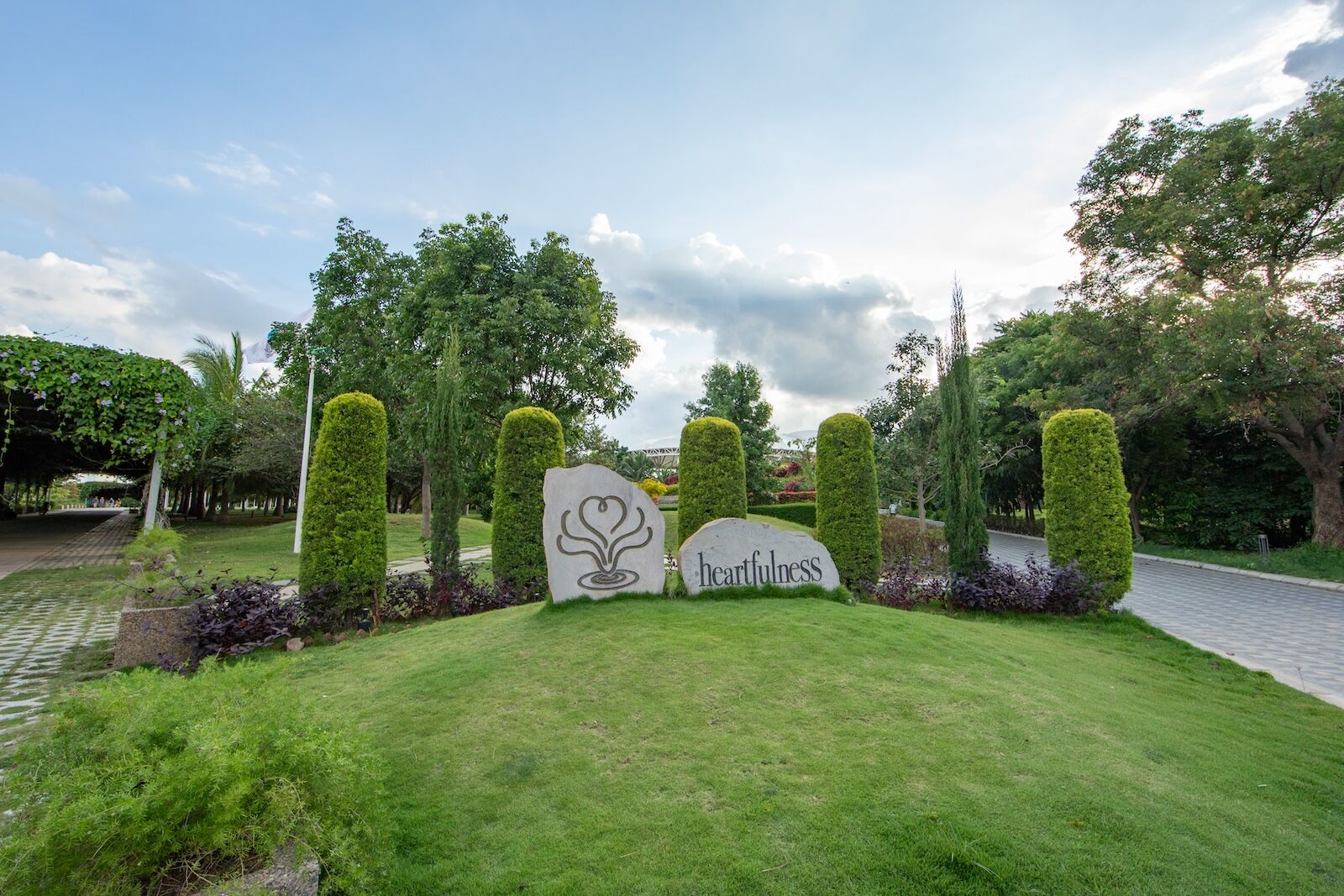
Photo: Heartfulness Media Team
The morning after my first meditation, I joined Hari in the main meditation hall for Sunday meditation. The marble felt cool on my bare feet, and the only noise above a low conversational murmur was the wind rustling the palms and various birds making their calls. Men sat in the rows of blue chairs on the left, women on the right.
I wasn’t the only one new to Heartfulness here. A few others sat at the front. Darshvinder walked onto the main stage and guides everyone to relax before the whole hall sits and meditates. After, two couples married: one a local couple and the other from Vancouver. It’s a simple affair with just the couple and the guide onstage. At the conclusion, each eats a cashew that has been blessed, and their hands are joined.
It was immediately clear to me from day one that Kanha is many things. A place for foreigners to join in marriage was unexpected, but maybe it shouldn’t have been. The tens of thousands of people drawn to Kanha from around the world come to learn and connect. Not all are Heartfulness practitioners when they come or even when they leave.
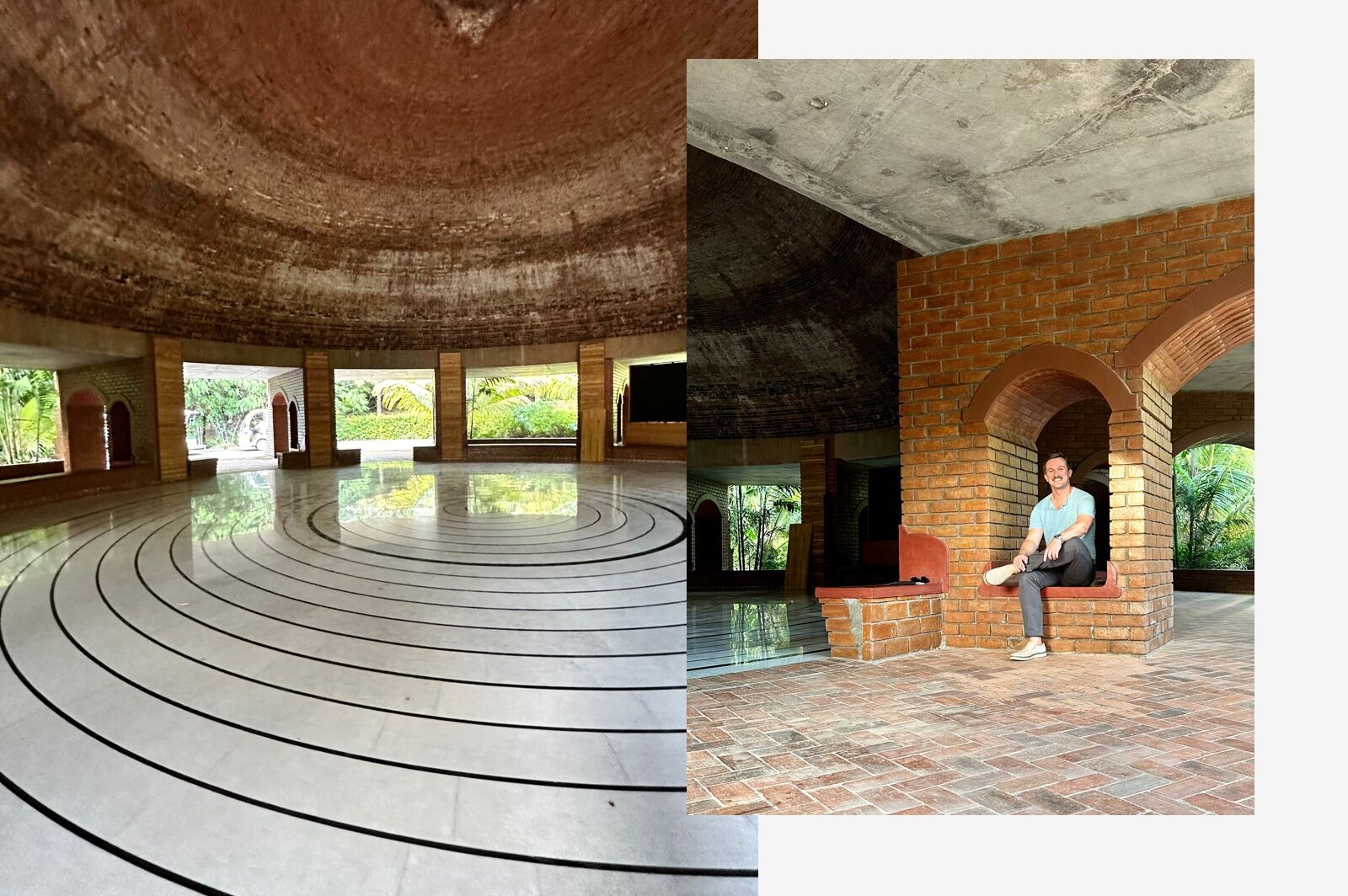
Photo: Nickolaus Hines
I left India committed to folding the practices I’d picked up into my daily life. I wanted to share it, too, with anyone who would listen. Continuing Heartfulness meditation amid the hectic schedule of daily life back in the States sounded daunting, but that underscores the point.
“Kanha,” Daaji said, “I also call it a trap.”
Coming here is to see as close to the ultimate everyday goal of Heartfulness as possible. It’s an incredible thing to witness, regardless of whether interest lies in the sustainability aspect, the people, or mental wellness alone. But life outside is hard. It’s also where the practices learned in Kanha can have the most benefit.
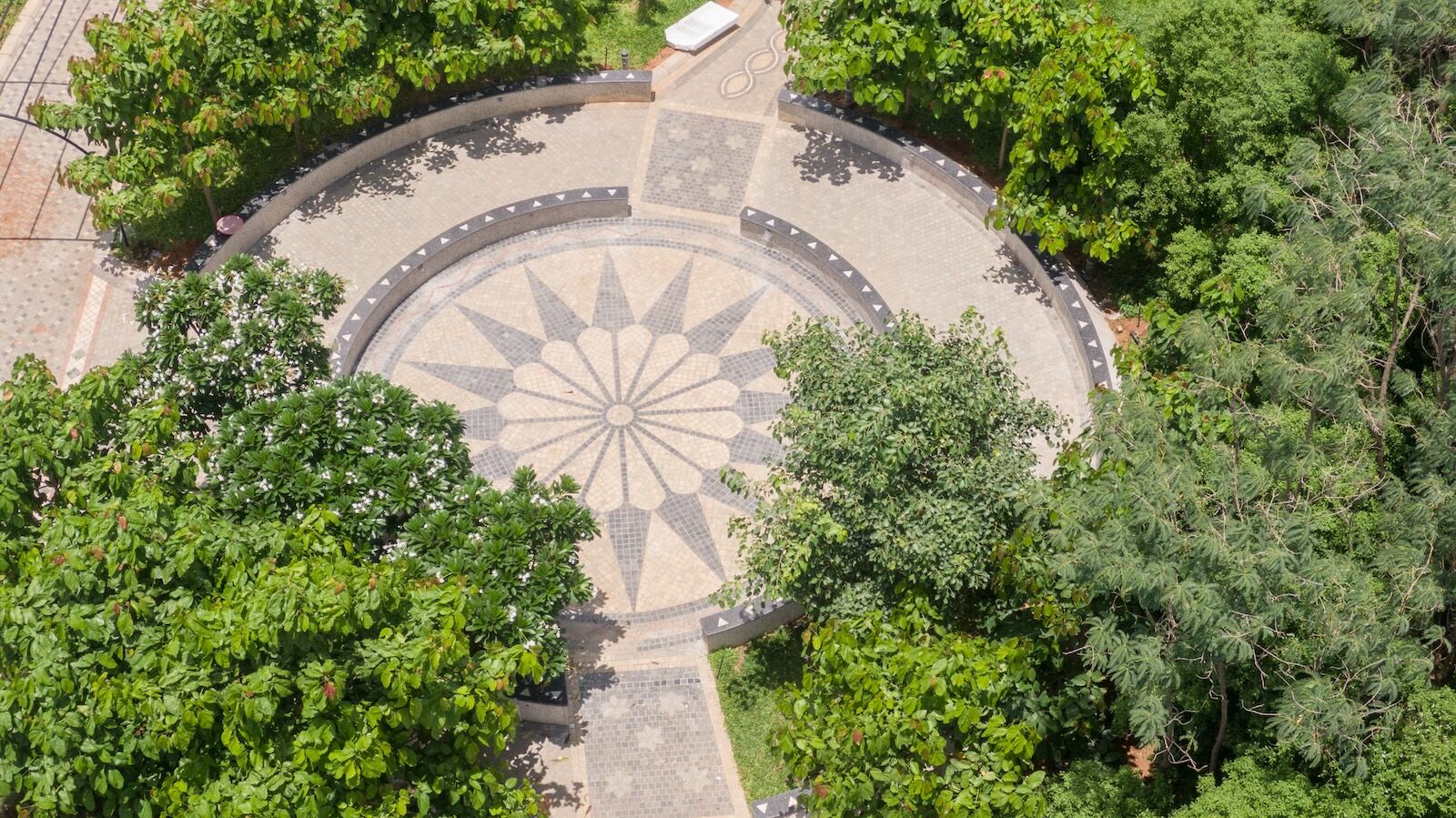
Photo: Heartfulness Media Team
“Kanha can inspire,” Daaji said. “But then you have to take the next step of living a real life.”
Daaji’s books — The Heartfulness Way, Designing Destiny, and the latest, Spiritual Anatomy — have helped bridge that gap for me. Another trip to Kanha isn’t out of the question, next time with family and friends, if only to share the things I feel need to be seen to be believed and to feel the connection that I made with Darshvinder, Hari, and others.
When that time does come, I know the Kanha I arrive in will be much different than the one I saw. Heartfulness emphasizes a natural flow rather than rushing. That said, development and improvements are constantly being added at a rapid clip. Daaji made the metaphor of a spinning top: when it’s at its fastest speed, it appears to stay in the same location while actually moving quickly.
Kanha, and Heartfulness as a whole, is just the map, Daaji said. Traveling the route to a more mindful lifestyle and more sustainable world is done by people. I’d add that traveling to Kanha makes the route that much more clear.